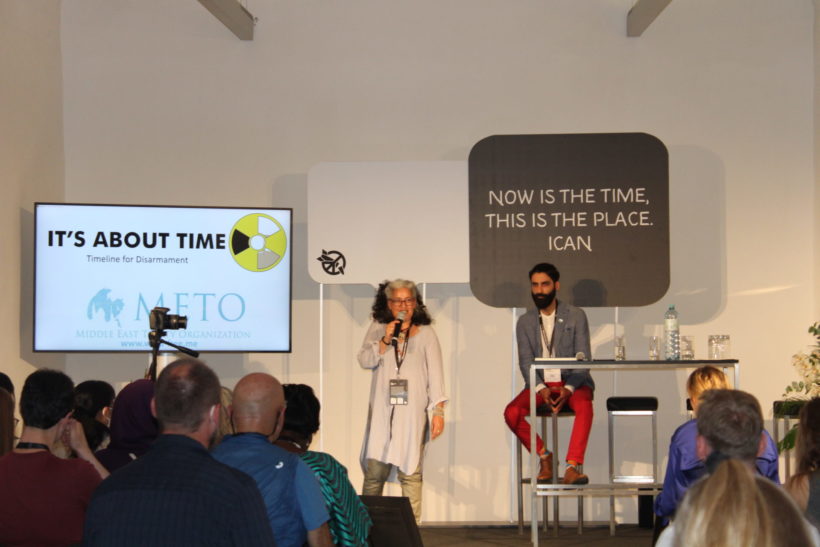At the Nuclear Ban Forum in Vienna on Saturday the 18th of June, an Israeli and an Iranian joined forces to share their vision for a ground-breaking treaty between Middle Eastern states.
Sharon Dolev, a peace activist for over 35 years and director at The Middle East Treaty Organisation, spoke first to a captive audience – stressing the power of starting the conversation on nuclear disarmament.
Beginning with why nuclear disarmament in the Middle East is essential was the first step in the operation.
Convincing diplomats how it could be carried out was another matter.
They were told it was not only “impossible” to draft a treaty for a nuclear free zone treaty in the Middle East.
They were told it was dangerous.
In 2008, a UN roundtable of western diplomats were incredulous about Israel disarming. As Dolev happily points out, the lack of Middle Eastern representation may have had something to do with their lack of faith.
Undeterred, the Middle East Treaty Organisation worked tirelessly to draft and present a treaty to the UN in 2016. Finally accepted as having potential, a light has been shone on the peace that is possible in the Middle East.
However, this must come as part of a push for all nine nuclear states to disarm, not Israel alone. Dolev ended her statement by imploring everyone who lives in the nuclear states to continue pushing for nuclear disarmament in their own countries.
Emad Kiyaei, also director at the Middle East Treaty Organisation, then stood to speak about the process of using the draft treaty as a road map for peace in the Middle East.
He told how, over the course of four days, opposing Middle Eastern state representatives met together in Zurich to discuss the draft treaty. The proceedings were so successful that those who came as adversaries were hugging each other and talking about their grandchildren by the end.
“We are living that vision that the Middle East can be a beacon of hope!” Striding across the stage, Kiyaei roused attendees with his conviction.
“Even hardliners, when presented with possibilities, can be for us.”
The takeaway? Change is possible when common ground is found.
It is for the future of all humanity’s grandchildren that the fight for nuclear disarmament continues.












